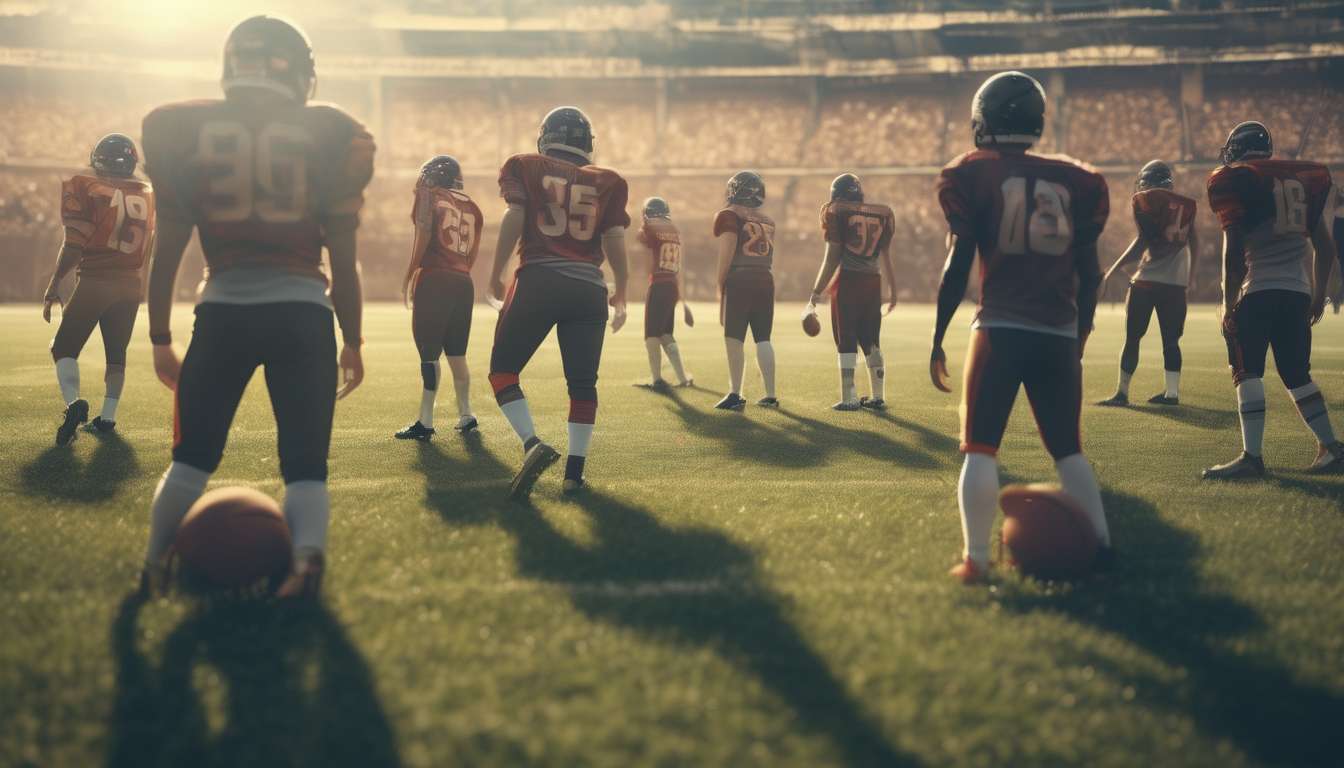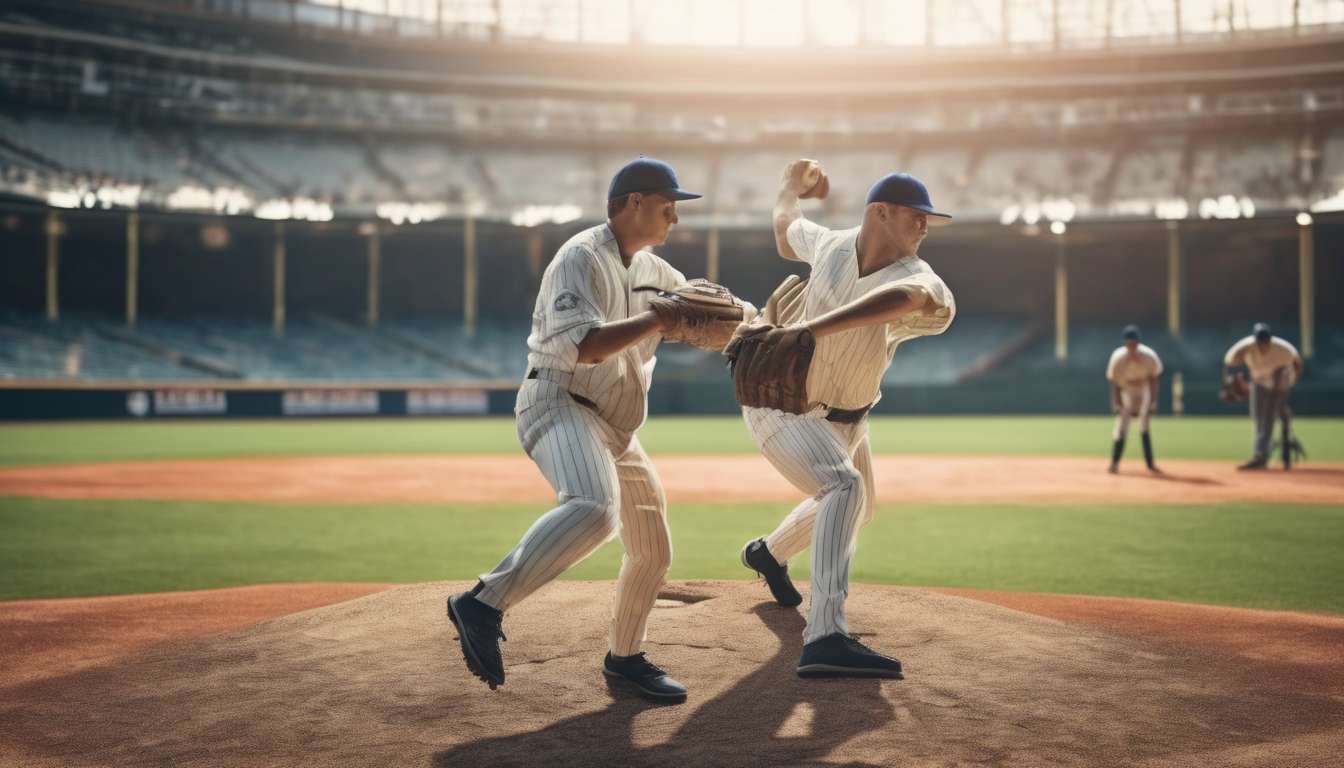In the world of sports analytics, we constantly strive to refine our understanding of team dynamics and performance. Our models are designed to:
- Predict outcomes
- Optimize strategies
- Ultimately help teams achieve success
However, one of the most challenging variables we encounter is the impact of injuries.
As analysts, we recognize that injuries are not just isolated events affecting individual players; they have ripple effects that can alter the entire fabric of team performance. We must consider:
- How the absence of key players influences game strategies
- How it disrupts established chemistry
- The necessity for adjustments in player roles
Through our exploration, we aim to uncover the nuanced ways in which injuries skew statistical projections and challenge our models’ accuracy.
By doing so, we strive to enhance our predictive capabilities, providing teams with the insights needed to adapt and thrive in the face of adversity.
Together, we delve into the complexities of injuries and their profound impact on team performance models.
Impact on Player Availability
Injuries and Team Dynamics
Injuries significantly reduce player availability, forcing us to adjust our team strategies and lineups. When a teammate is sidelined, it’s not just a loss in skill or talent; it’s a shift in our entire game plan. This requires us to step up and fill the gaps left behind.
Adapting to Challenges
With every setback, we must rethink our approach to ensure that team cohesion isn’t compromised. This involves:
- Finding new ways to leverage each player’s strengths
- Maintaining our collective spirit
Strategic Flexibility
Injuries can occur at any time, affecting the way we execute our game strategies. It’s crucial to remain adaptable and ready to change tactics at a moment’s notice while preserving unity.
Overcoming Hurdles Together
By working closely together, we can overcome these challenges, ensuring our team remains strong and competitive. Our shared goal is to support each other, reminding ourselves that even in adversity, we’re united in purpose and resolve.
Disruption of Team Cohesion
Unexpected injuries can significantly disrupt our team’s cohesion, challenging our established communication and coordination on the field. When a key player is sidelined, it feels like a piece of our collective puzzle is missing. Each of us has a role, and when one is suddenly vacant, it disrupts the rhythm we’ve built together through countless hours of practice. Our trust in each other and our ability to anticipate movements and decisions are tested.
Injuries force us to adapt quickly, shifting our dynamics and testing our unity. We lean on each other to fill the gaps, recognizing that our shared goal extends beyond individual contributions. It’s a reminder of how connected we are and how every member is vital to maintaining our team cohesion.
Though injuries can unbalance us momentarily, they also present an opportunity to:
- Strengthen our bonds
- Reaffirm our commitment to our game strategies
- Foster a deeper sense of belonging
Overall, while injuries are challenging, they ultimately contribute to our growth and resilience as a team.
Altered Game Strategies
We must rethink our entire approach on the field, adjusting tactics to accommodate the absence of key players, while still capitalizing on our collective strengths. Injuries can disrupt our usual game strategies, compelling us to explore fresh avenues to maintain our competitive edge.
Our unity becomes our greatest asset, as we adapt and evolve together, ensuring everyone feels valued and integral to the team’s success.
In these moments, team cohesion is crucial. We can’t rely solely on individual brilliance; instead, we must emphasize collaboration and trust. By fostering an environment where each member understands their role and contributes to a shared vision, we can overcome the challenges injuries present.
Key strategies include:
- Exploring new formations
- Refining our defensive and offensive plays
- Leveraging the diverse skills within our squad
This adaptability not only strengthens our resilience but also deepens our sense of belonging, reminding us that, despite setbacks, we stand united in pursuit of victory.
Shifts in Player Performance
Player performance can vary significantly when injuries necessitate unexpected role changes and increased responsibilities.
When one of our key players is sidelined, others must step up, often leading to shifts in performance levels. This situation can be challenging, but it also brings opportunities for growth and adaptation within the team.
We find ourselves reevaluating our game strategies to accommodate these changes, ensuring everyone feels valued and essential.
Injuries test our team cohesion, pushing us to rely even more on communication and trust.
As roles shift, players may discover hidden strengths or develop new skills, ultimately enhancing our collective performance. It’s crucial that we support each other through these transitions, fostering a sense of unity and belonging.
Together, we navigate the complexities of altered responsibilities, always aiming to maintain a competitive edge.
By embracing these shifts, we cultivate resilience and adaptability, qualities that are vital for overcoming the inevitable challenges injuries present.
Effects on Statistical Trends
Our team’s injury-related adjustments often lead to noticeable shifts in statistical trends, reflecting how quickly we adapt to changing dynamics. When injuries hit:
- We don’t just lose players; we’re prompted to rethink our game strategies.
- This shift affects both individual performance metrics and overall team cohesion.
As we recalibrate, new patterns emerge. For example, when a key player is injured, others often step up, leading to:
- Unexpected rises in their statistics
- Boosted morale
- A stronger sense of unity
Adapting our game strategies in response to injuries can improve resilience, creating a dynamic environment where every player’s contribution is crucial. By analyzing these statistical trends, we can:
- Identify areas that need improvement
- Adjust our tactics accordingly
This proactive approach ensures our team remains competitive and cohesive, even when facing adversity. In essence, injuries, though challenging, can serve as catalysts for growth and innovation within our team framework.
Challenges in Model Adaptation
Adapting our performance models to account for injuries presents significant challenges that test our analytical capabilities and flexibility. When key players are sidelined, it disrupts team cohesion, crucial for seamless gameplay. We need to recalibrate our models to reflect not just the absence of a player but the ripple effects on the entire team dynamic.
It’s not simply about substituting one player for another; we’re considering how every shift in the lineup impacts team chemistry.
Our game strategies must evolve as well. Injuries force us to rethink our approach on both offense and defense. The adaptability of our models hinges on:
- How effectively we can integrate real-time data.
- Anticipating changes in strategy.
We must work collectively to ensure that our models remain robust and reflective of the team’s current state.
By fostering a sense of unity and shared purpose, we can overcome these challenges and refine our understanding of team performance.
Influence on Win-Loss Patterns
The occurrence of injuries can significantly alter win-loss patterns by disrupting established team dynamics and necessitating strategic adjustments. As a team, injuries challenge our cohesion, forcing us to adapt quickly and creatively.
When key players are sidelined:
- Our game strategies need a revamp to fill gaps and maintain performance levels.
- We often have to rely on our depth, bringing in players who may not have had as much time to gel with the main squad.
This shift can test our unity but also strengthen it as we rally together to overcome adversity.
It’s crucial to embrace these moments to foster a sense of belonging among all team members. By valuing each player’s contribution, we can maintain morale and keep everyone engaged.
Adapting our strategies also means being open to innovation, which can lead to unexpected successes.
Ultimately, dealing with injuries is a collective effort, and our resilience can turn challenges into opportunities for growth.
Implications for Playoff Contention
Navigating injuries during the season can drastically impact our playoff contention prospects. When key players are sidelined, we face challenges in maintaining team cohesion. Injuries force us to adapt quickly, reshaping game strategies to compensate for the missing talent.
This adjustment period can be crucial as it tests our depth and resilience as a team. We need every player to step up and embrace their new roles, fostering a sense of unity and shared responsibility.
Our approach to overcoming these setbacks involves clear communication and strategic planning. We must:
- Analyze our opponents.
- Leverage our strengths, even when not at full capacity.
By doing so, we can minimize the impact of injuries on our performance.
We also emphasize mental toughness and the importance of staying focused on our playoff goals. Together, we can overcome adversity, maintaining our competitive edge and ensuring that injuries don’t define our season.
Our collective effort keeps us in the race for playoff contention.
How do psychological factors related to injuries influence team morale?
When injuries happen, our team feels the impact on our morale. Psychological factors like:
- Fear
- Frustration
- Uncertainty
can influence how we come together and support each other. These emotions affect our team spirit and can either:
- Bring us closer
- Create tension
It’s crucial for us to:
- Communicate openly
- Show empathy
- Work on building resilience
to navigate these challenges together.
What role do external factors, such as media pressure, play when a key player is injured?
When a key player is injured, external factors like media pressure can significantly impact the team.
The constant scrutiny and attention from the media can add to the already stressful situation, affecting team dynamics and performance.
It’s important for us to:
- Acknowledge the influence of these external pressures.
- Find ways to support each other during challenging times.
Together, we can navigate these obstacles and emerge stronger as a team.
How do injuries impact the fan base’s support and engagement with the team?
Injuries can deeply affect the fan base’s support and engagement with the team. When a key player is sidelined, we all feel the impact.
Our loyalty and excitement may waver as we worry about the team’s performance without them. It’s tough to stay as enthusiastic when a star player is out of action.
We long for their return and hope the team can hold strong in their absence.
Conclusion
In conclusion, injuries have a significant impact on team performance models, affecting several key areas:
- Player Availability: Injuries determine which players are available for games, directly impacting team strength.
- Team Cohesion: Frequent changes in lineup due to injuries can disrupt team chemistry.
- Game Strategies: Coaches may need to adjust strategies based on the available players.
- Player Performance: Injured players may not perform at their best, affecting overall team performance.
- Statistical Trends: Injuries can skew statistical analyses, leading to inaccurate predictions.
- Model Adaptation: Performance models need to adapt to account for injuries and their effects.
- Win-Loss Patterns: The overall success of a team, including playoff contention, can be heavily influenced by injuries.
These challenges must be carefully considered when analyzing teams and predicting their success. Ultimately, injuries highlight the importance of understanding and accounting for their effects in sports analytics.




